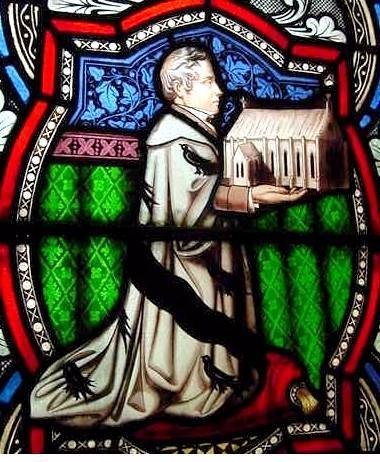St Stephen's Parish
Serving the Catholics of Skipton, Craven and the Dales
Part Three: Re-building Catholic life in Skipton
If you've been following up to here from page one of the History, you'll probably want to know how all the background is relevant, although you should have had glimpses of that by now. If you've skipped ahead to this page: welcome, but you may have missed quite a bit of fascinating history...
The parish of St Stephen's is inextricably linked to the Tempest family of Broughton Hall which is probably the only local family that maintained an unbroken link with pre-Reformation Catholicism. We noted above how Broughton Hall became the Mass centre for the Skipton area during recusant times and was served by Benedictine and Jesuit missionary priests. These priests put themselves at greatpersonal risk just ministering in the country but the families who harboured them were in an equally dangerous position.
In the late 18th century, the building of the Leeds-Liverpool canal and increasing industrialisation of Britain led to an influx of Irish immigrant workers, who were typically Catholics. There was also an influx of Catholic clergy and religious orders from France who had fled the persecution of the French Revolution. The penal laws were relaxed even though anti-Catholic discrimination was to persist into the middle of the 20th century. These factors were to lead to the eventual need for a Catholic parish in Skipton.
Below: the Tempest coat of arms is beautifully depicted in stained-glass in the Tempest chapel of the church.
In 1812 John McGlincy came from Ireland and settled in Skipton, the only recorded Catholic at that time and the first of a number of continuous Catholic families in the town. He was employed as a gardener by the Tempest family and would attend Mass at Broughton Hall. In 1824 Stephen Tempest died and was the last Tempest to be buried at the Anglican parish church in Broughton. In that same year, Parliament passed an Act that forbade Catholic families like the Tempests from continuing to use the Anglican parish church as their burial place. It became evident that a solution would be to build a Catholic church. In 1826, still 3 years before Catholic Emancipation, the earliest mention of building a church is made by Thomas Peter Tempest. He was the brother of Charles Robert Tempest who had inherited the Broughton Hall estates. Thomas was proposing to enter religious life and was disposing of his property. He left £800 for the building of a "plain but neat chapel in or about Skipton" to his brother, Charles and subsequently became a secular priest and first parish priest of the parish. Meanwhile the Catholics of Skipton who included Baldisaro Porri, an Italian immigrant would meet on Belmont bridge every Sunday and walk to Broughton Hall for Mass said by Fr Michael Trappes. Fr Trappes also regularly said Mass in Skipton above Myers' shop in Albert Street. Another site was the Black Horse Hotel (now Inn) which was managed by the Peckstone family in the 1820s. It is probable that Baldisaro Porri was responsible for the church being named after St Stephen, the proto-martyr. This was also the name of the church in his beloved home town of Appiano in Italy.
In April 1835 Fr Trappes had plans for the proposed church drawn by Mr Lane of Manchester. The extant church plans are signed by James Flint who is thought to be the designer although other references suggest the church was designed by Richard Love. A beautiful position on the borders of the town known for its trees as Sycamore Hill was bought with the help of Charles Tempest. Building began in the late summer of 1836 and the foundation stone was laid by Charles Tempest on 27 October 1836. The cost of the original building including the land came to £1681.09.11d. At this time there was a local Catholic population of 230. Incidentally, the church was built to house just little over this number!
|
However a serious dispute arose between Charles Tempest and Fr Trappes. The priest had hoped that the Tempest chapel built in Skipton would become a Catholic parish church and hence under his control as the parish priest. Hence he embarked on fund-raising and he clearly took the initiative on the plans and building project. The squire, whose family had served the local Catholics for so many centuries disagreed because he had expected the family chapel to be under his authority. Fr Trappes left Broughton Hall in December 1837 and the dispute carried on for five years, during which the church sadly remained unopened. The adjudicator of this dispute was Dr John Briggs who was at the time Co-adjutor of the Northern District. England was to have no hierarchy of its own until 1850 and until then Dr Briggs was de facto bishop of this area. On 5 May 1842, an agreement was signed between the now Sir Charles Robert Tempest, baronet and the Rt Rev Dr Briggs. This agreement gave the Tempests the authority to nominate a priest to serve St Stephen's Church on condition that the Bishop and the diocese did not have to pay to maintain the priest or the running of the parish. |
 |
Right: Sir Charles Robert Tempest, baronet is depicted in stained glass offering the completed church to God. This window was a gift of the Catholics of Skipton to the church in 1852.
Click here for Part Four of the History of the Parish
